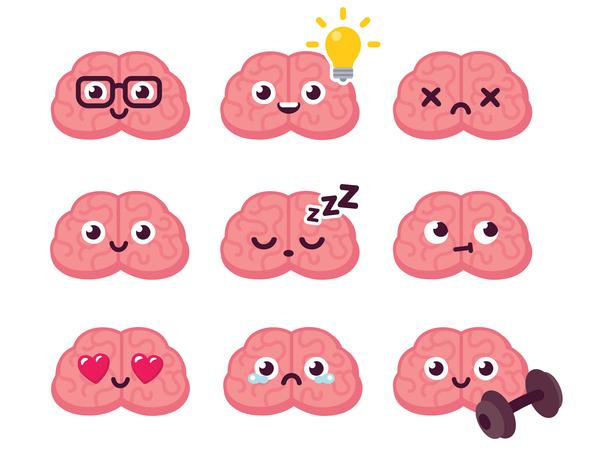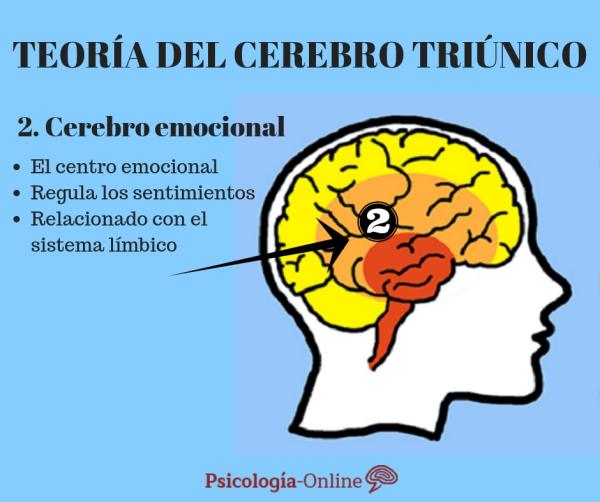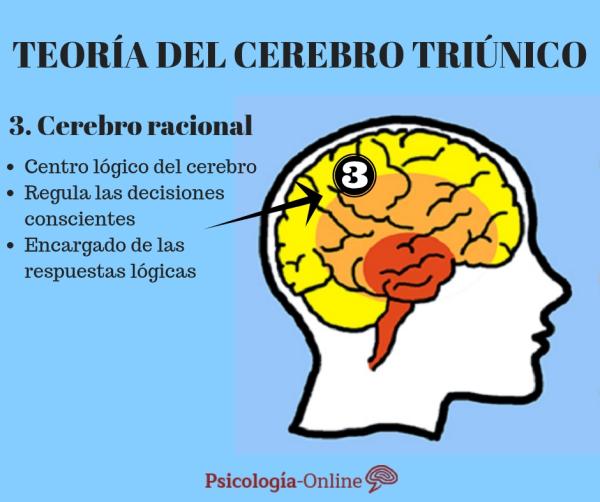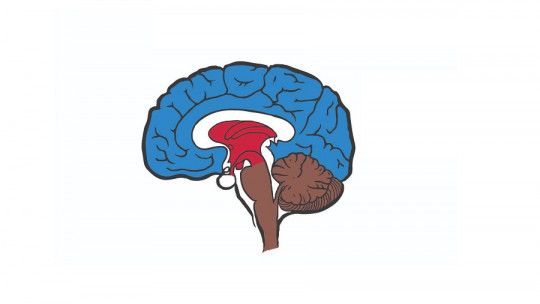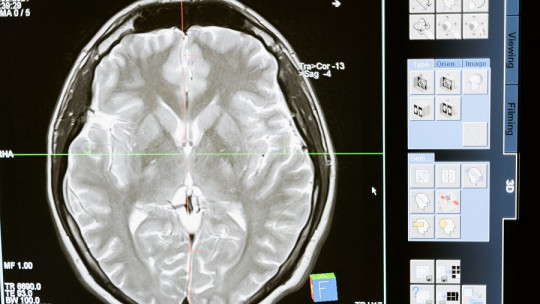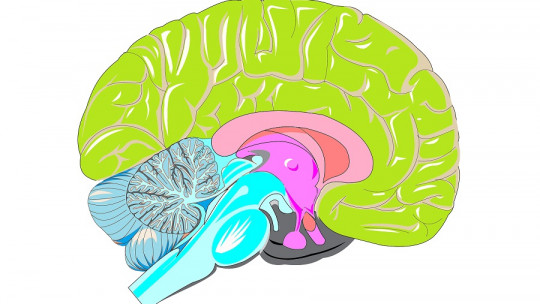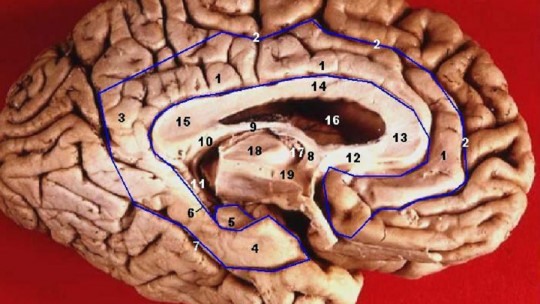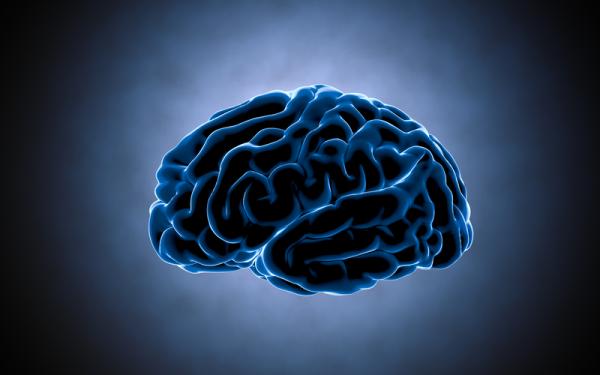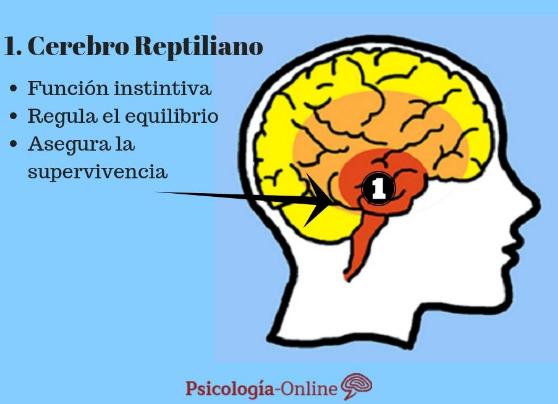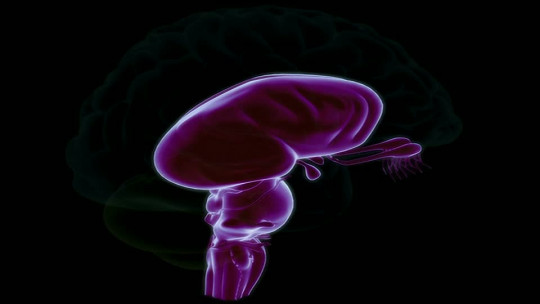There are many theories about how our mind works and how the brain regulates these mental processes. In recent decades, numerous advances in neuroscience have allowed us to discover new ways of understanding the brain and its functioning
In 1990, Paul MacLean proposed a brain structure divided into three brain systems (commonly known as the three brains) interconnected with each other, he defined each structure and created the well-known theory of the triune brain or triune brain These systems are divided as follows:
- reptilian brain
- Limbic or emotional brain
- Rational brain or neocortex
Do you want to know more about MacLean’s triune brain theory ? Then don’t miss this interesting article that we offer you in PsychologyFor.
The theory of the Triune Brain
The theory of the triune brain Mac Lean three brain theory arose with the aim of grouping different neuronal areas according to their function and in the order of evolutionary appearance (from the most primary systems to those most advanced structures typical of human beings). Furthermore, according to Sperry and MacLean(1)these structures are physically and chemically differentiated.
In essence, the three-brain theory proposes a new way to regroup our brain. These three blocks or sections are known as the reptilian brain, the limbic or emotional brain (coinciding with the limbic system) and the rational brain.
These sections are connected to each other but at the same time function independently. Therefore, they constantly send information to each other despite each one being focused on a specific function.
Paul MacLean: biography, theory and books
Born in 1913 in the United States, Paul McLean He was a doctor focused on the field of neurosciences who dedicated much of his studies to the field of psychology and psychiatry. He began to develop the theory inspired by Papez’s neuroscientific texts and proposing the limbic system as the center of emotions.
From those small steps, Paul MacLean developed a theory that would gain strength in the late 70s. However, it was not until 1990 that his studies on the theory of the triune brain were captured in the book known as “the triune brain in evolution“.
Next, we will develop the three systems defined by MacLean according to his triune brain theory
The reptilian brain
Also known as the instinctive brain or basic brain, this is the most primitive brain of all according to MacLean’s theory.
The reptilian brain is considered the ancestral structure that regulates our vital functions and the most instinctive behaviors related to life. survival of the individual (eat, drink, sleep) and of the species (impulses and sexual relations). In short, according to psychology, the function of the reptilian brain is to act quickly and instinctively to ensure our survival.
Anatomy of the reptilian brain
We find the reptilian brain in the lower area of the brain: the brainstem and forebrain (1). The reptilian brain, according to psychology, is that area in which the energy levels of our body are controlled and balance is sought, also known as homeostasis
Many experts claim that the amygdala is part of the reptilian brain, however, the debate remains open as to whether this organ is part of the limbic system or the instinctive brain.
The emotional or limbic brain
According to the theory of the triune brain, this area appeared with the first mammals and developed above what we have previously defined as the reptilian brain. The limbic brain is considered the center of emotions, that is, our emotional nervous system. And it is responsible for producing and generating emotions in our nervous system.
It is important to state that this area has a very adaptive function: produces emotional responses and generates very important learning at an experiential level. Our memory, motivation, arousal, and attention systems tend to function more productively when influenced by emotions.
- Let’s take an example: We will remember an event better if we have felt a strong emotion (like going to our favorite group’s concert). On the other hand, we tend to forget those events that do not produce intense emotional responses in us.
Relationship between emotional brain and limbic system
This second structure is in turn made up of six elements: the thalamus, the amygdala, the hypothalamus, the olfactory bulbs, the septal region and the hippocampus. Thus coinciding with what we define today as limbic system (2).
The limbic system, like the emotional brain, is the area in charge of regulating emotions and modulating the way we express them.
The rational brain or neocortex
Finally, according to this interesting theory of the three brains, we find the neocortex or rational brain: this part of our brain is responsible for cognitive processing and making reasoned and logical decisions.
The rational brain is popularly called gray matter, however, the neocortex is made up of various brain structures, among them we highlight the left hemisphere and right hemisphere of the cerebral cortex. Another name with which we find this area is the isocortex.
Functions of the neocortex
We must understand the rational brain as a structure practically unique to our species. According to MacLean, the human being is the only organism that has a fully developed neocortex.
- The abilities Intellectual, logical and decision making Rational are some of the abilities that this brain area provides us.
- In addition, the rational brain also helps us in the processes of self-awareness, reflection and organization
Anatomically speaking, we find the neocortex in the most superficial area of the brain (3), it makes up 90% of the cerebral cortex and extends in the form of folds and circumvallations.
Criticisms of the triune brain theory according to psychology
The nervous system is a complex network of neuronal cells that work as a team. Although we can anatomically differentiate different parts of the nervous system and brain, MacLean’s model it’s too simple for all the information we have today.
Even so, the theory of the triune brain is very important since it relates brain areas with specific mental functions. Thanks to this theory (among others) today, we can develop some disciplines such as neuropsychology
The triune brain theory in neuromarketing
Although the theory of the triune brain in marketing has a lot of impact, in psychology it is considered an outdated model. Thanks to new neuroimaging techniques, we can see that our brain is not made up of parts as if it were a puzzle.
This article is merely informative, at PsychologyFor we do not have the power to make a diagnosis or recommend a treatment. We invite you to go to a psychologist to treat your particular case.
If you want to read more articles similar to MacLean’s triune brain theory we recommend that you enter our Neurosciences category.
References
- MacLean, Paul D. The triune brain in evolution: Role in paleocerebral functions. Springer Science & Business Media, 1990.
Bibliography
- Velásquez Burgos, BM, Calle, MG, & Remolina De Cleves, N. (2006). Neuroscientific theories of learning and their implication in the construction of knowledge of university students. Blank Tab(5).
- Patiño, M. (2008). Get to know your brain. Bogotá: Metropolitan Technological Institute.


